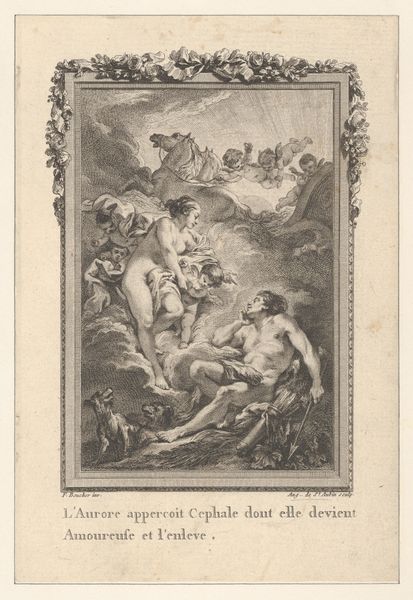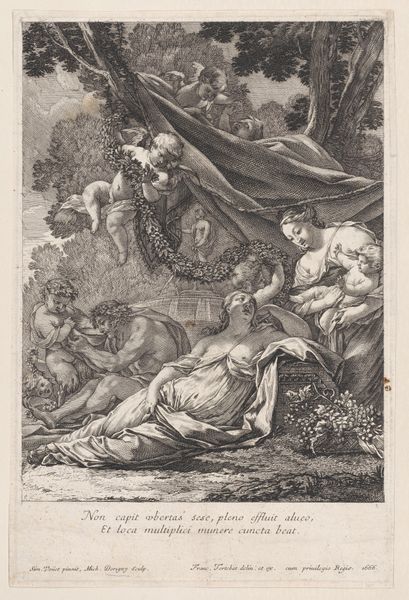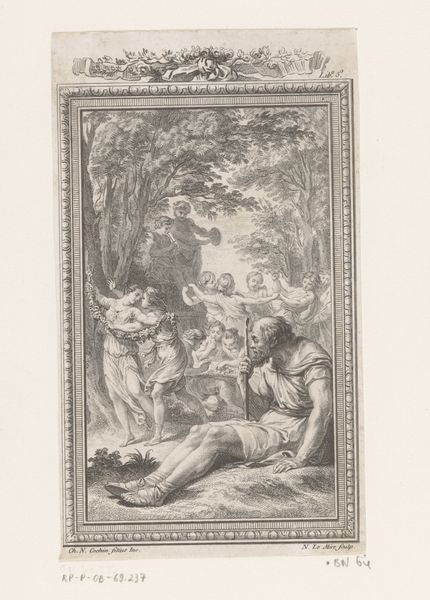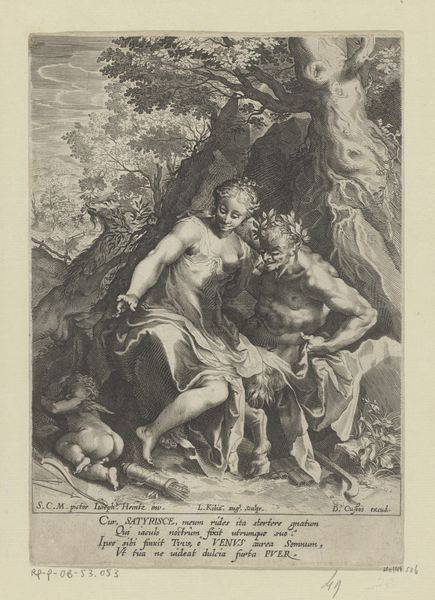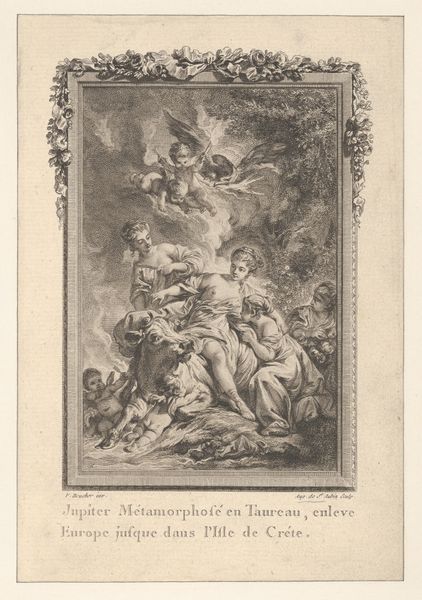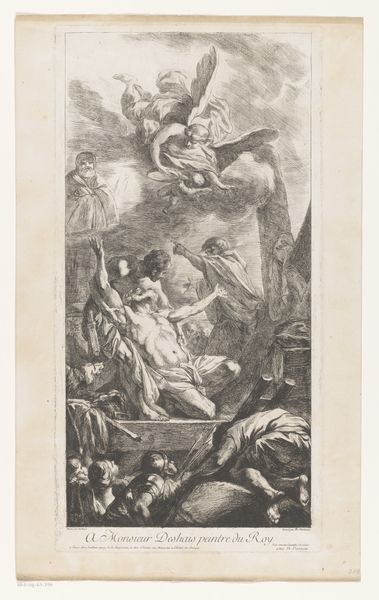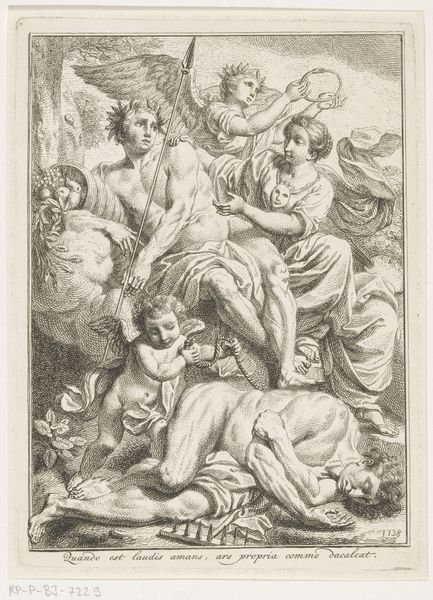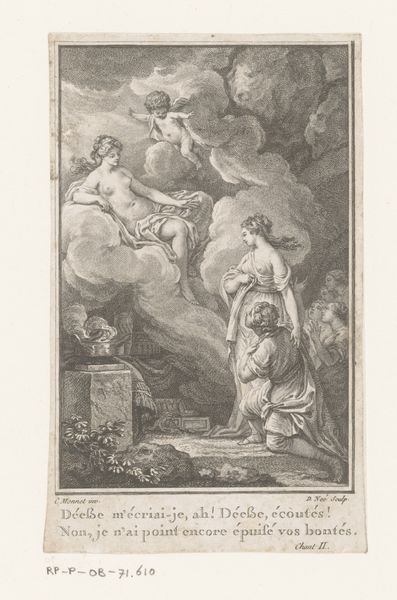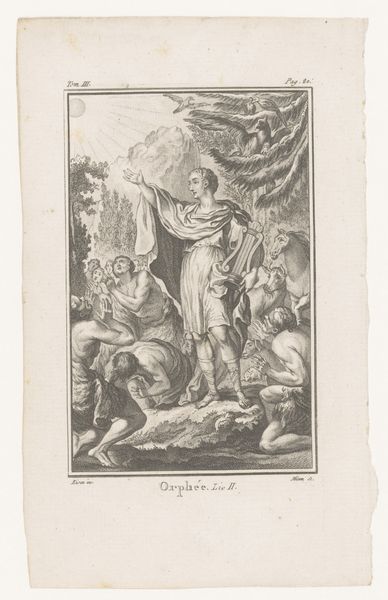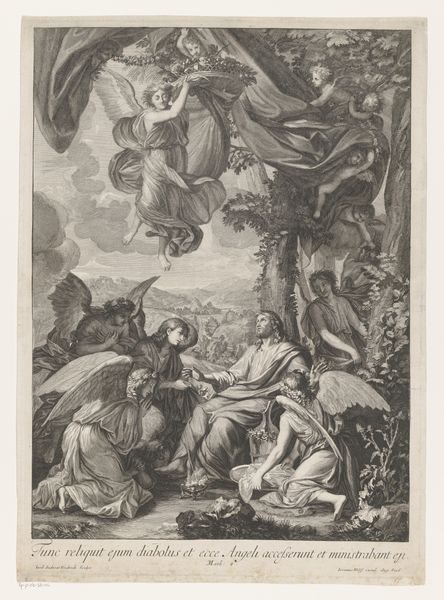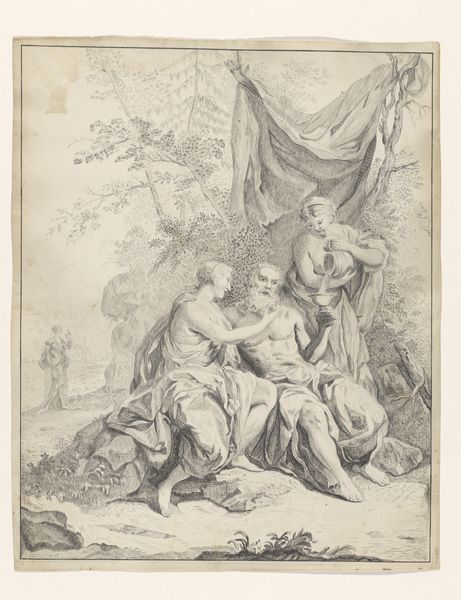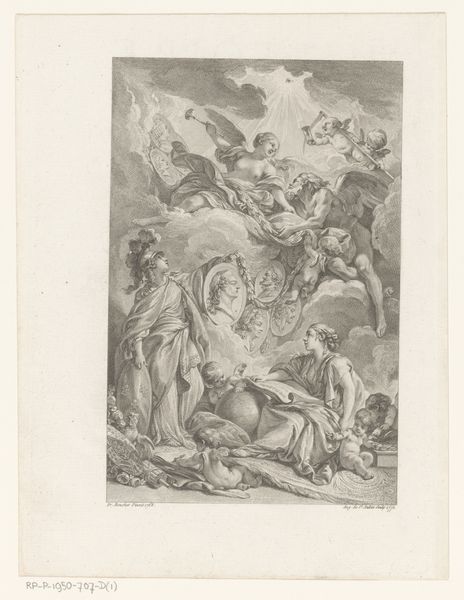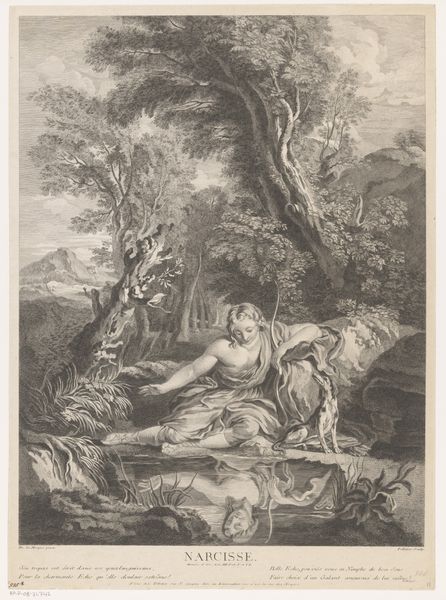
Vignette (Tome 1.er, page 200, lib. III, fab. 3), depicting Diana Turning Actaeon into a Stag, from Les Métamorphoses d'Ovide en Latin et en François de la traduction de M. l'Abbé Banier de l'Académie Royale des Inscriptions et Belles-Lettres. Avec des explications historiques. A Paris Chez Despilly rue saint Jacques à la croix d'or. MDCCLXVII. Avec Approbation et Privilège du Roi 1766
0:00
0:00
Dimensions: Sheet: 7 5/8 × 5 3/16 in. (19.3 × 13.2 cm)
Copyright: Public Domain
Editor: Here we have "Vignette," a print by Augustin de Saint-Aubin, from 1766, depicting Diana turning Actaeon into a stag. It has such an ornate, almost theatrical feel, with all the figures arranged so deliberately within that frame. What stands out to you about this piece? Curator: The immediate element that captures my attention is the intricate interplay of line and form. Note how Saint-Aubin utilizes engraving to create a sense of depth, with meticulously rendered details, juxtaposing light and shadow to give volume to the figures and the surrounding landscape. Observe how the artist manipulates line to delineate form, constructing the human figures. Editor: Yes, it is almost hyper-realistic, even in the fantastic setting of the Metamorphoses. What else are you seeing? Curator: Delving deeper, consider the formal balance. The artist structures the composition employing a pyramidal arrangement, from lower left to Diana at the composition's peak. Observe, also, the frame around the vignette. Ask yourself, does it serve a mere decorative function or does it reinforce, through its visual language, the themes present within the central image? Editor: That is an interesting point, considering the transformation depicted. Maybe the border is trying to contain the moment? Thank you for sharing! Curator: Of course. Recognizing these elements grants us access to a richer understanding, one where technique and symbolism intersect to deepen our engagement with the work of art.
Comments
No comments
Be the first to comment and join the conversation on the ultimate creative platform.
